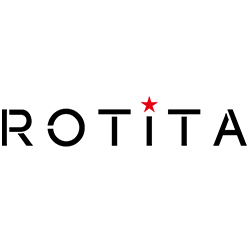As COVID-19 case rates tick up across the Bay Area and California, San Francisco and Santa Cruz counties reported the highest rates of coronavirus infections in California so far this week. The Bay Area saw a 167% increase in coronavirus infections in April, the same month that California dropped most of its COVID mitigation measures, like mask requirements on public transit.
U.S. Secretary of State tests positive for COVID-19 after press dinner: Secretary of State Antony Blinken tested positive for COVID-19 on Wednesday, the State Department said. Blinken, who is vaccinated and boosted, was in attendance at the White House Correspondents’ Dinner in Washington on Saturday, where several other guests were reportedly infected. He is experiencing mild symptoms. President Biden was also at the event but the State Department said he is not considered a close contact and has not seen Blinken “in person for several day.” White House press secretary Jen Psaki said the president tested negative on Tuesday. Comedian Trevor Noah, who performed at the dinner and mocked guests for attending after the breakout at the Gridiron Dinner, said, “It is my great honor to be speaking tonight at the nation’s most distinguished superspreader event.” He added, “You guys spent the last two years telling everyone the importance of wearing masks and avoiding large in-door gatherings, then the second someone offers you a free dinner, you all turn into Joe Rogan.”
CDC forecasts COVID deaths to rise for first time in months: The U.S. Centers for Disease Control and Prevention predicts that the number of newly reported COVID-19 deaths will likely increase over the next four weeks, with 1,600 to 4,600 new deaths likely reported in the week ending May 28. The agency’s ensemble forecast shows that the U.S. will reach a total of 1,000,000 to 1,007,000 confirmed COVID-19 deaths by that date. The figures mark the first time virus-related deaths have increased since February, following a steep decline after the winter omicron surge. Deaths in California are also expected to trend up in that period.
Los Angeles County tightens rules to control COVID spread in schools: Facing a rise in coronavirus cases, students in Los Angeles County TK-12 schools who have been exposed to COVID-19 but are asymptomatic will be required to wear masks indoors for 10 days after their most recent exposure, according to updated health department guidelines. While the students will not be required to quarantine if they do not show symptoms, they must provide proof of a negative virus test within three to five days. Officials in the nation’s largest county also expanded the definition of a close contact for large indoor spaces to include a pre-defined group, such as an entire club or a team, in addition to anyone who comes within 6 feet of the infected person for more than 15 minutes. The changes went into effect Wednesday.
Growing share of U.S. population wrongly blames Asian Americans for pandemic: The proportion of adults in the U.S. who wrongly blame Asian Americans for the COVID-19 pandemic has nearly doubled, increasing to 21% this year from 11% in 2021. Asian Americans, who make up 7% of the U.S. population, are also facing increasing discrimination, with one in six adults experiencing a hate crime or hate incident in 2021. Those findings were shared Wednesday in a new study from the nonprofit Leading Asian Americans to Unite for Change and the Asian American Foundation. “On the surface, we thought it was COVID and Trump. Deeper down we know it’s related to the model minority myth and perpetual foreigner stereotypes. But even deeper, it really [shows] the embedded systemic racism in this country against Asian Americans,” Norman Chen, the co-founder of the nonprofit, said in a statement.
Coachella Valley cases rise 41% following music festivals: Following two weekends of the Coachella Valley Music and Arts Festival and an additional weekend of the Stagecoach country music festival at the Empire Polo Club in Southern California’s Coachella Valley, the region is seeing a rise in coronavirus cases. There was a 41% increase reported between April 19 and 26, according to data analyzed by The Desert Sun. Riverside County, where the festivals took place, also experienced a 44% increase in COVID-19 infections over the same period. The true epidemiological impact of the festivals is hard to measure because thousands of people from outside of the area where they took place traveled to attend.
Oakland implements mask mandate for large indoor gatherings: The Oakland City Council voted Tuesday to implement a mask mandate for indoor gatherings of 2,500 people or more. The council also voted to remove the city’s proof of vaccination requirement at restaurants, bars, gyms and other businesses. Residents will still have to show a proof of vaccine to enter senior centers. Read the background on this story here.
S.F. and Santa Cruz top state in infection rates: San Francisco and Santa Cruz counties have the highest coronavirus infection rates in the state, as of Tuesday, each reporting an average of 38 cases per 100,000 residents. That’s up from about three per 100,000 a month ago. The numbers counts are likely undercounts since now-prevalent at-home tests do not typically get reported to the system. San Francisco’s coronavirus test positive rate reached 7.9% on Tuesday, according to new city data. The rate is more than double the 3.2% test positive rate for California as a whole, and above the 5% threshold public health experts consider acceptable for controlling the spread of the virus. Read more here.
New Bay Area infections up 167% in a month: An upturn in coronavirus cases and hospitalizations in the Bay Area is beginning to gather steam, as new COVID-19 infections in the region have risen 167% in the same month that saw the state dropping most mitigation measures, including vaccine verification and mask requirements for schools and public transit. Read the full story.
San Mateo County officials ‘not concerned’ about uptick in hospitalizations: COVID-19 transmission, test positivity and hospitalizations are increasing in San Mateo County, but county health officials said Tuesday that hospitalizations number fewer than during last summer’s delta surge, even though the level of viral transmission is similar. “The level of COVID-19 hospitalizations is higher than it was in early April,” San Mateo County Health Chief Louise Rogers told county supervisors Tuesday. “But it is still relatively low, and we’re not concerned about the level of hospitalizations.” As of Monday, there were 21 hospitalized COVID patients in the county.
Bay Area expands “test to treat” sites: Starting Wednesday, College of San Mateo will be a “test to treat” location where people who test positive for COVID-19 can receive a telehealth appointment and get connected with treatments they may be eligible for, county health officials told supervisors Tuesday. President Biden in March announced the “test to treat” initiative to make prescription treatments available on the spot once someone has tested positive. San Mateo joins other local health departments in this push to make the public more aware of treatments, like the antiviral pill Paxlovid. Paxlovid must be taken within five days of the onset of symptoms, so it’s critical that people get the prescription soon after they test positive. Contra Costa County last week opened a phone line for patient consultations with doctors who can prescribe medication as appropriate. About 70 people have used it to get appointments, many receiving prescriptions, said Contra Costa County Health Director Anna Roth.
Vaccines for youngest children may arrive by June: The Food and Drug Administration has scheduled dates in June to review COVID-19 vaccine data for children 5 and under, the last remaining age group not yet cleared for the shots. The FDA meetings are typically the final step before authorizing the rollout of vaccines. The agency’s outside panel of experts will meet on June 8, 21 and 22 to review applications from Moderna and Pfizer for child vaccines. The dates are tentative. “We intend to move quickly with any authorizations that are appropriate once our work is completed,” said Peter Marks, director of the Center for Biologics Evaluation and Research.


